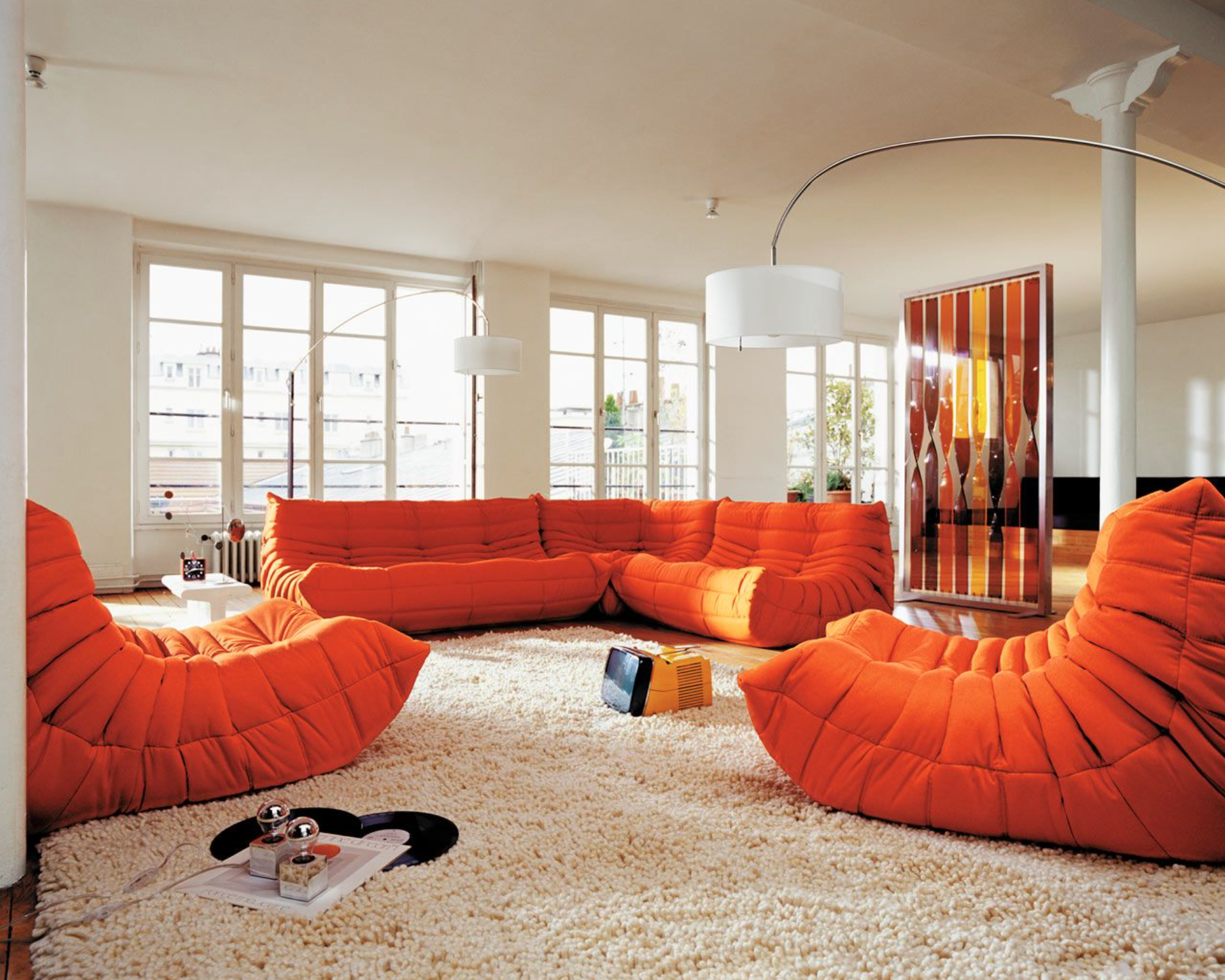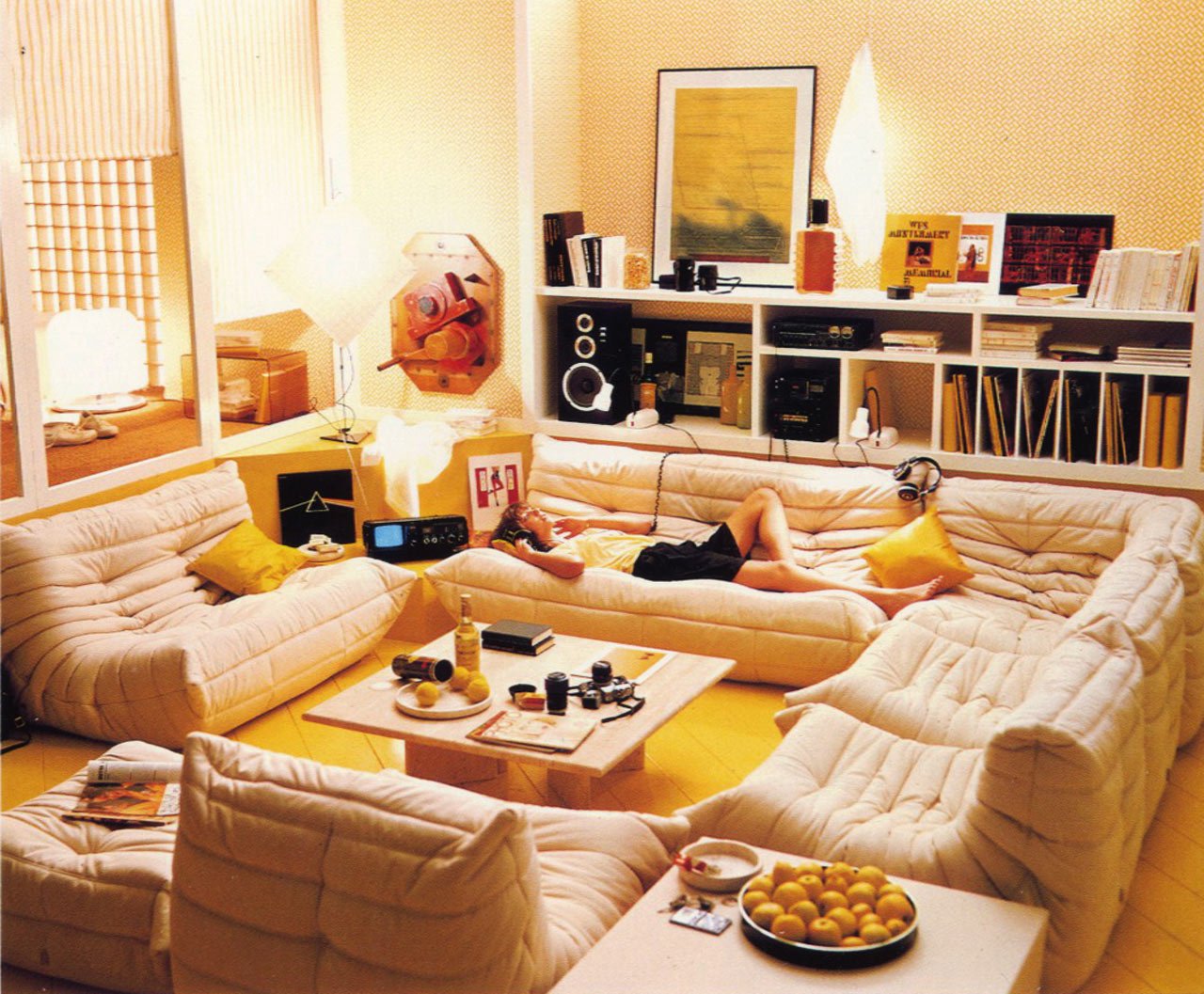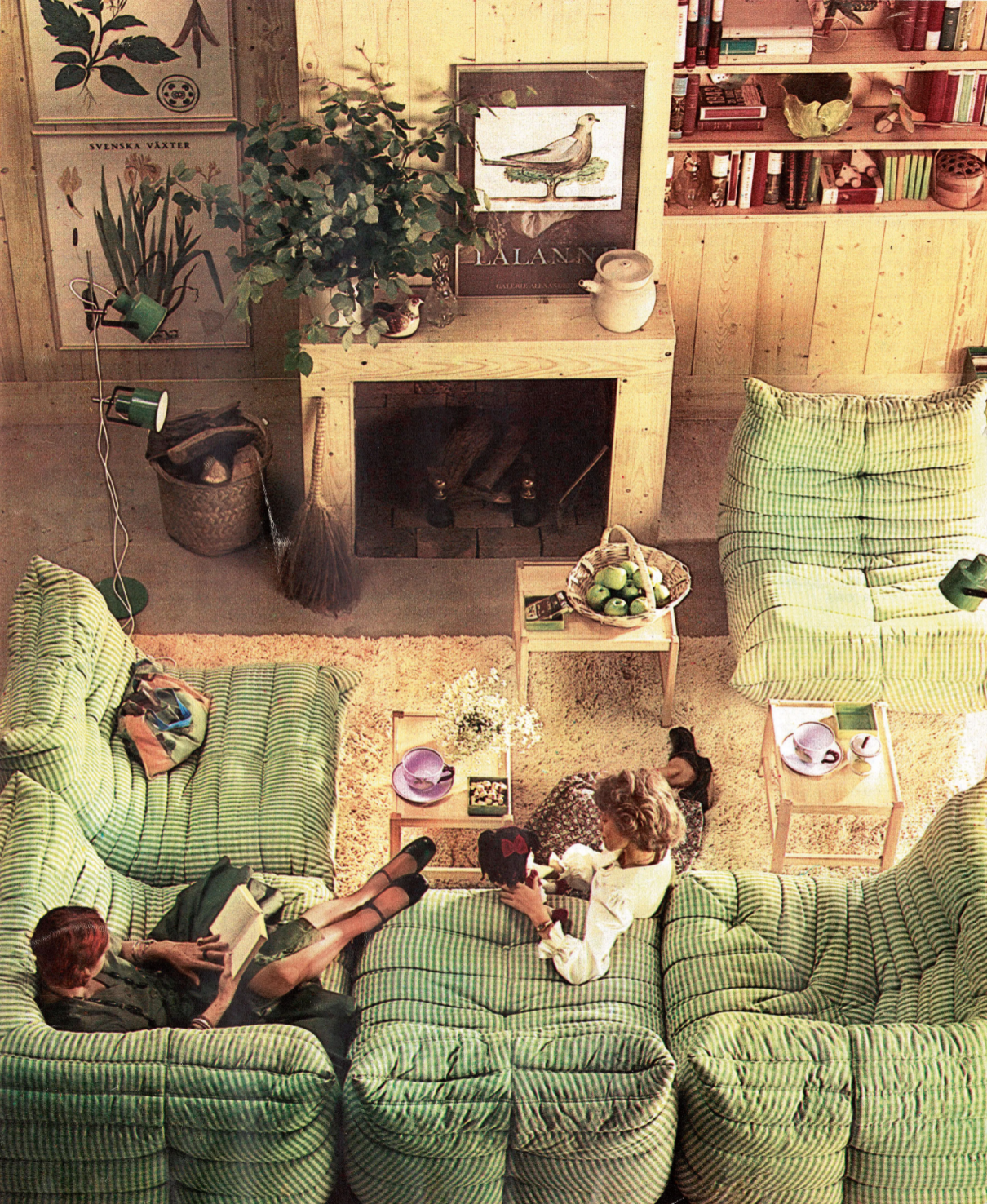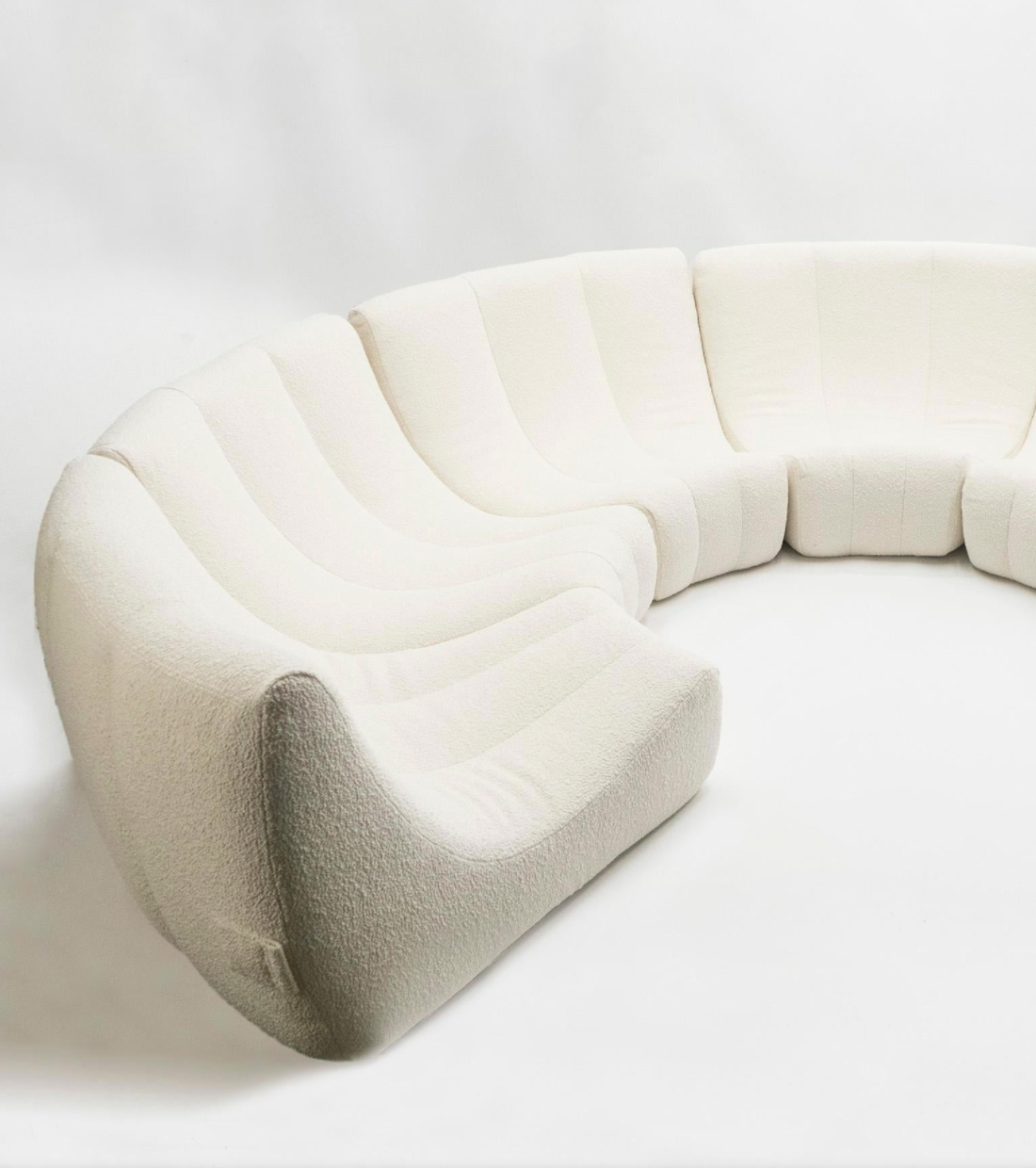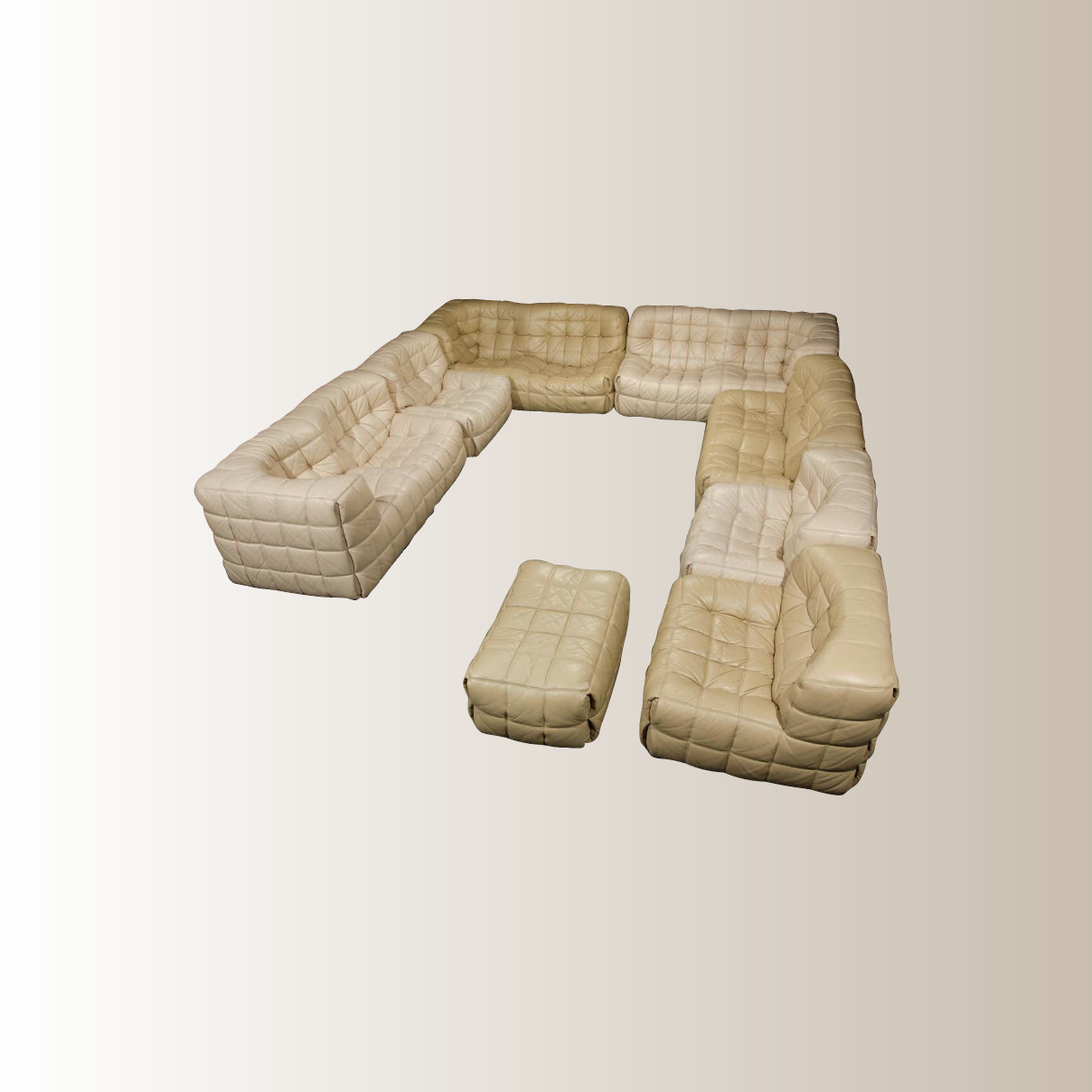The History of Michel Ducaroy’s ‘Togo’
Iconic, legendary, one-of-a-kind, are all ways you could describe the decades old design. Yet, the togo has been trending since the seventies. It’s turned heads and melted hearts, residing in homes of collectors and Connoisseurs alike. The love for this design has kept it in production for nearly 50 years now. Let’s dive deep into the ‘togos’ rich history and how it came to be.
About Michel Ducaroy
French artist Michel Ducaroy was born in 1925, into a family of designers. There was no doubt that these familial ties had a large affect on young Michel, who went on to study at the Ecole Nationale des Beaux Arts in Lyon. He would work at his families business's for years until he decided to take a different direction and began working for himself as an independent designer in 1952.
Only two years later, in 1954, Ducaroy met Jean Roset and joined the French furniture brand, Ligne Roset. He became head of the design department and with new materials emerging during the 60's and 70's, he began pushing the technological boundaries. He focused on new innovations and materials, like foam, thermoformed plastics and wadding.
Before the ‘Togo’, Ducaroy had produced a handful of other designs such as the ‘Adria’, the ‘Kandy’ and the ‘Salina’(shown further down), but little did he know, his next design would become one of the most iconic designs of the 20th century.
In 1973, the Togo was born
Funny enough, its inspiration was drawn from an aluminum toothpaste tube! Ducaroy was standing at his sink one morning, examining the item and noticed that it “folded back on itself like a stovepipe and closed at both ends.”
A quick sketch later and the Togo series was born. The supreme seating featured a hunk of foam generously quilted with polyester and layers of wrinkles sometimes compared to having a “crumpled, newborn” appearance, or even described as “Shar-Pei wrinkles”. The timeless, yet, unique style fits into almost any interior.
The legendary design was unveiled at the Home Economics show in 1973 where it was met with skepticism.
“The main shock was that it had no base,” recalls Antoine Roset, global marketing director and a great-great-grandson of Ligne Roset’s founder. “People thought we forgot or didn’t have time to build one.”
Despite the criticism, the Togo won the René-Gabriel prize for high quality at a fair price.
Nearly 50 years later, the Togo is still in production and continues to be one of Ligne Roset’s best sellers. The company has sold over 1.2 million pieces to date in 72 countries. They have added new styles and different upholstery options as well, including a children’s version and adding arms to some models. Rare original production pieces are highly sought after by collectors and design connoisseurs alike, knowing that their value and collectibility are only going to continue rising with time.
Unlike many manufacturers today who have automated the production process, Ligne Roset has teams of talented craftsmen and upholsters who spend hours building the design. For upholstery alone, the process can take 4 hours for fabric covers and almost 6 hours for leather. It’s not just a job, it’s truly an art form. Watch how it’s done in this video from Ligne Roset:
Video from Ligne Roset
The Togo wasn’t Michel Ducaroy’s only design hit. His other designs such as the Kashima and Gilda were revolutionary but are no longer in production, which makes these pieces much more rare and collectible. Beyond their rarity and collectibility, designs by Michel Ducaroy are known for their complete comfort and unique style that seemingly fits within almost any interior.
Other Notable Designs
‘Marsala’ by Michel Ducaroy for Ligne Roset
‘Adria’ by Michel Ducaroy for Ligne Roset, 1968
‘Adria’ by Michel Ducaroy for Ligne Roset, 1968
the story of the brand that made it all possible
Photo from Ligne Roset
In 1930, Antoine Roset opened a wood processing factory in Montagnieu, in the Ain province of France.
Antoine and his son Emile began designing and producing various items such as wooden umbrellas and walking sticks. It wasn’t until 1950, in post-war France, that Antoines grandson, Jean, would envision the family business as a producer of furniture. This large shift was made possible since Ligne Roset already employed 50 people and could begin contracting furniture immediately. 10 years later, Ligne Roset entered the domestic market and grew exponentially.
In the 1960s and 1970s, Jean’s sons, Pierre and Michel joined the family business. They pushed the creative boundaries even further, revitalizing the company by working with interior architects and designers such as Michel Ducaroy. In 1973, the Ligne Roset brand became official. Their very first store opened and inside customers found what would be one of the most timeless and iconic designs, Michel Ducaroy’s Togo.
DISCLAIMER: THE MILLIE VINTAGE DOES NOT OWN ANY RIGHTS TO THESE PHOTOS. PLEASE NOTE THAT ALL IMAGES AND COPYRIGHT BELONGS TO THE ORIGINAL OWNERS. NO COPYRIGHT INFRINGEMENT INTENDED.
